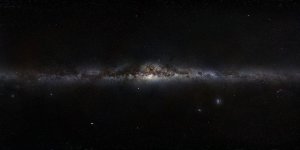| News / Space News |
Does Our Galaxy Sound Like Funky Blues Music?
Interstellar space is mostly a vacuum, so there is no medium that can carry sound. In other words, space is totally silent. But astronomers have often associated the movement of heavenly bodies with music. With the help of modern technology, one astronomer has turned the signals from the Milky Way into a funky tune.
"It was an idea that I had for a long time," said University of Massachusetts Astronomy Research Professor Mark Heyer, "and only recently has some of the technology come about that somebody like me could access that."
The visible light coming from distant worlds carries a lot of information that can be analyzed with a spectroscope. Heyer developed a computer program, or algorithm, to convert the movement of large clouds of atoms and molecules of different elements and compounds, into music.
"I take the spectrum and I, essentially, mathematically resample that to a musical scale and that gives that spectrum, which is inherently atonal, it gives it the tonality. And that is what really is the key stuff to make it sound nice," he said.
Heyer randomly assigned different musical instruments to different gases, forming a combination consisting of a saxophone, a piano, an upright bass and some percussion woodblocks. For instance, a certain atomic gas, which fills much of the space between the stars, is represented by the upright bass.
"It gives you that driving pulse, I think, that drives the music forward. And the woodblocks sort of do that as well," he said.
After some experimenting, Heyer decided to use the pentatonic minor blues scale.
"I was experimenting with the algorithm and I had major scales and simple minor scales, but when I first played the available segment of just one of the instruments, it sounded like that could be a very nice blues or jazzy sound to it," he said. "So, I recrafted the algorithm so it could transform the data into a musical blues scale."
Heyer says he was surprised when he realized for the first time that the rotation of our galaxy contains a rhythm — and that funky blues seemed to fit perfectly. (George Putic/VOA)
YOU MAY ALSO LIKE



